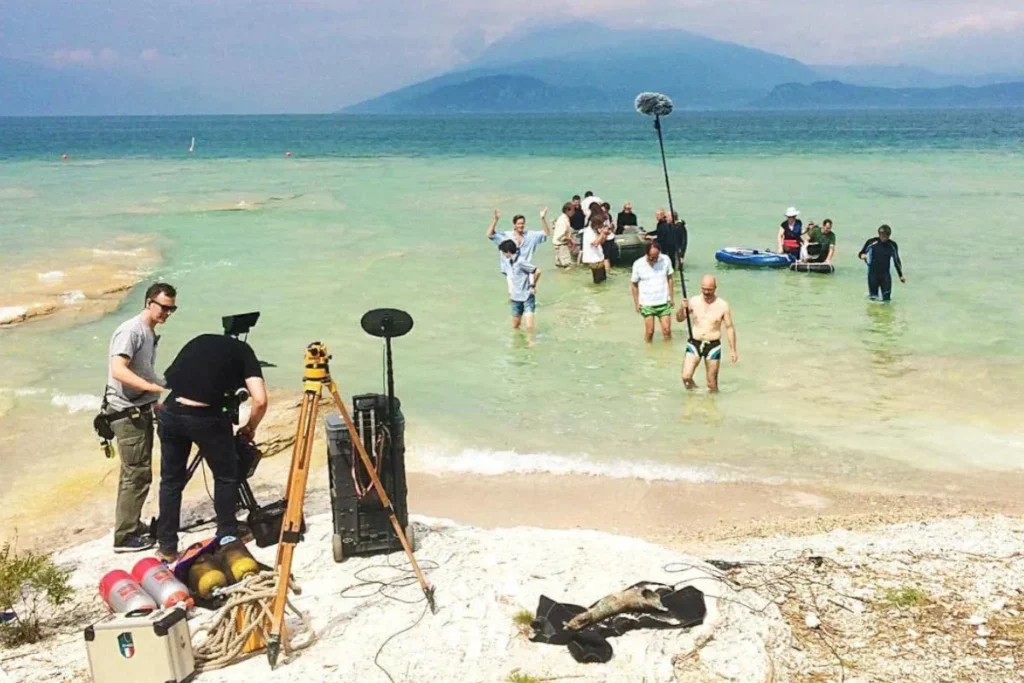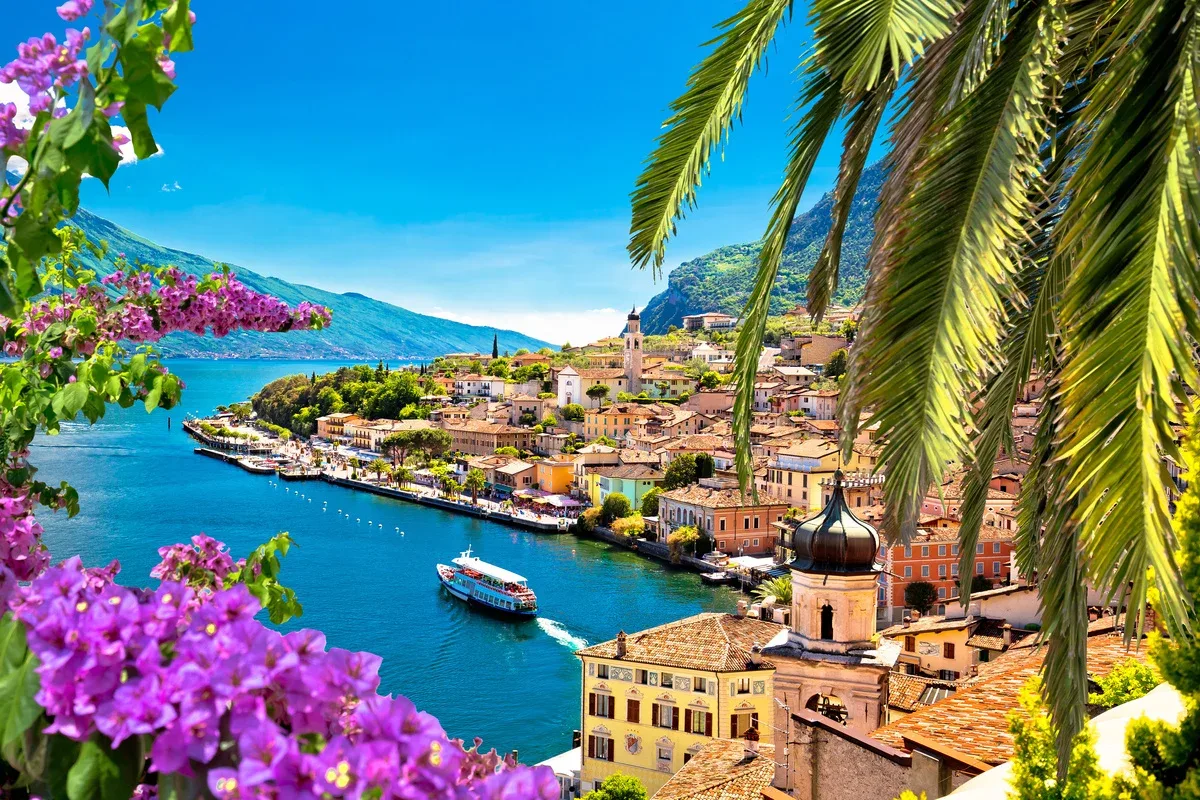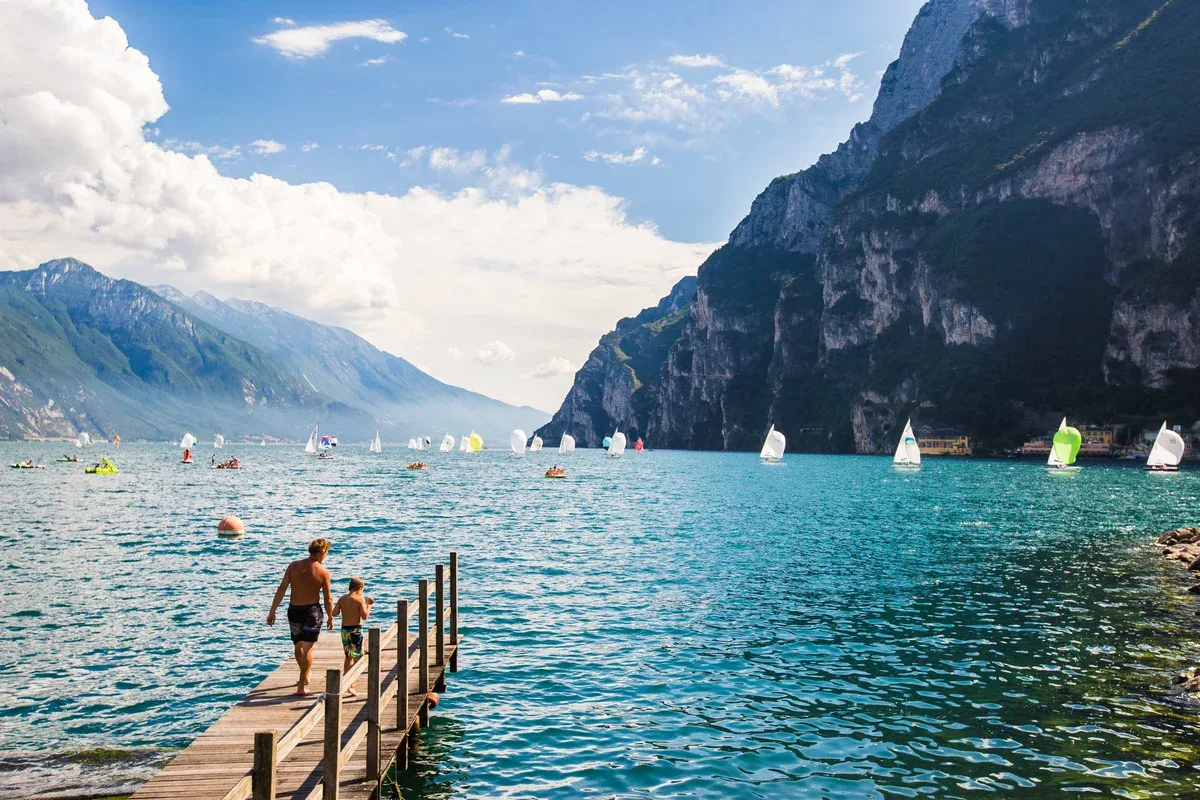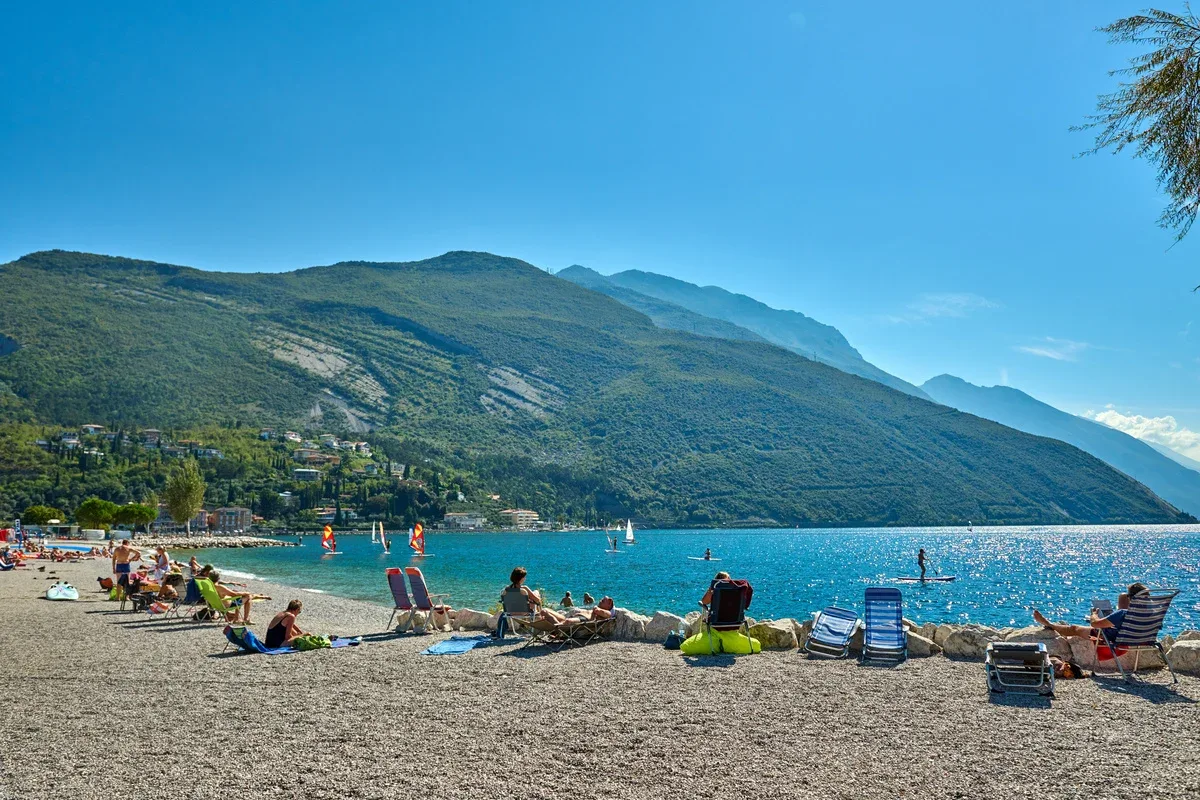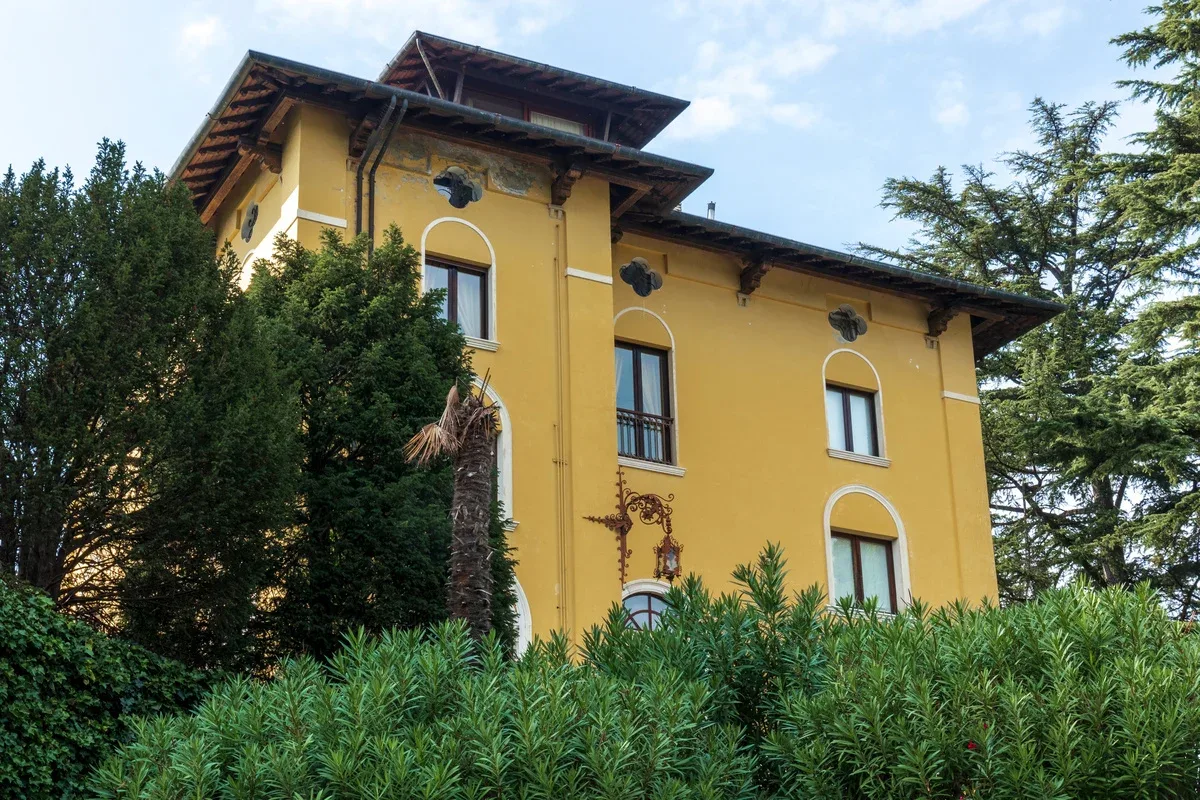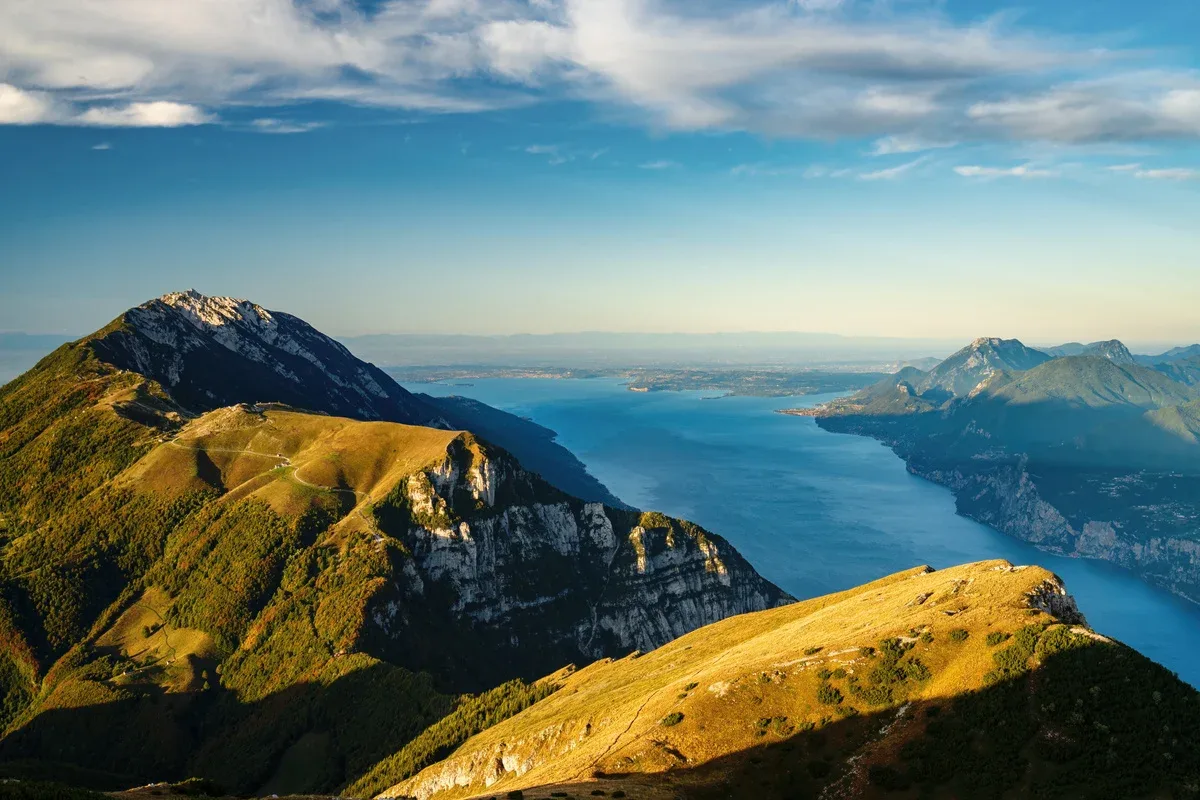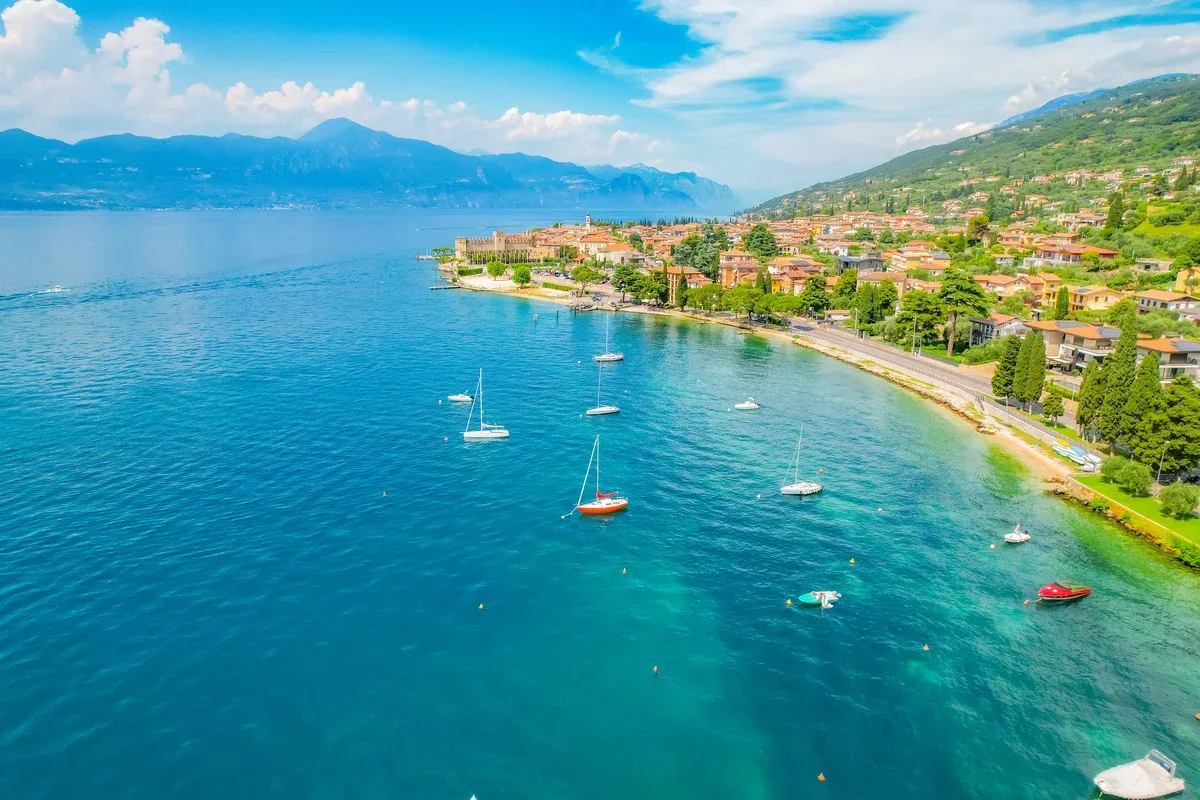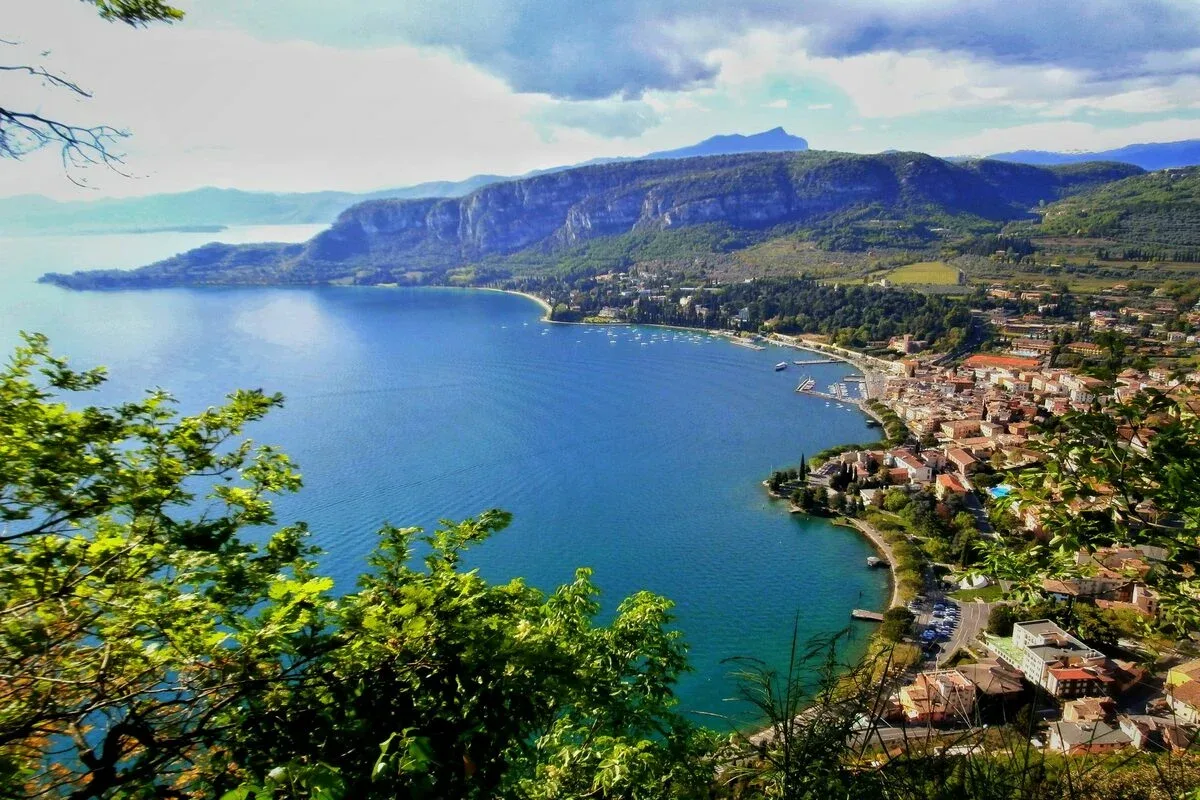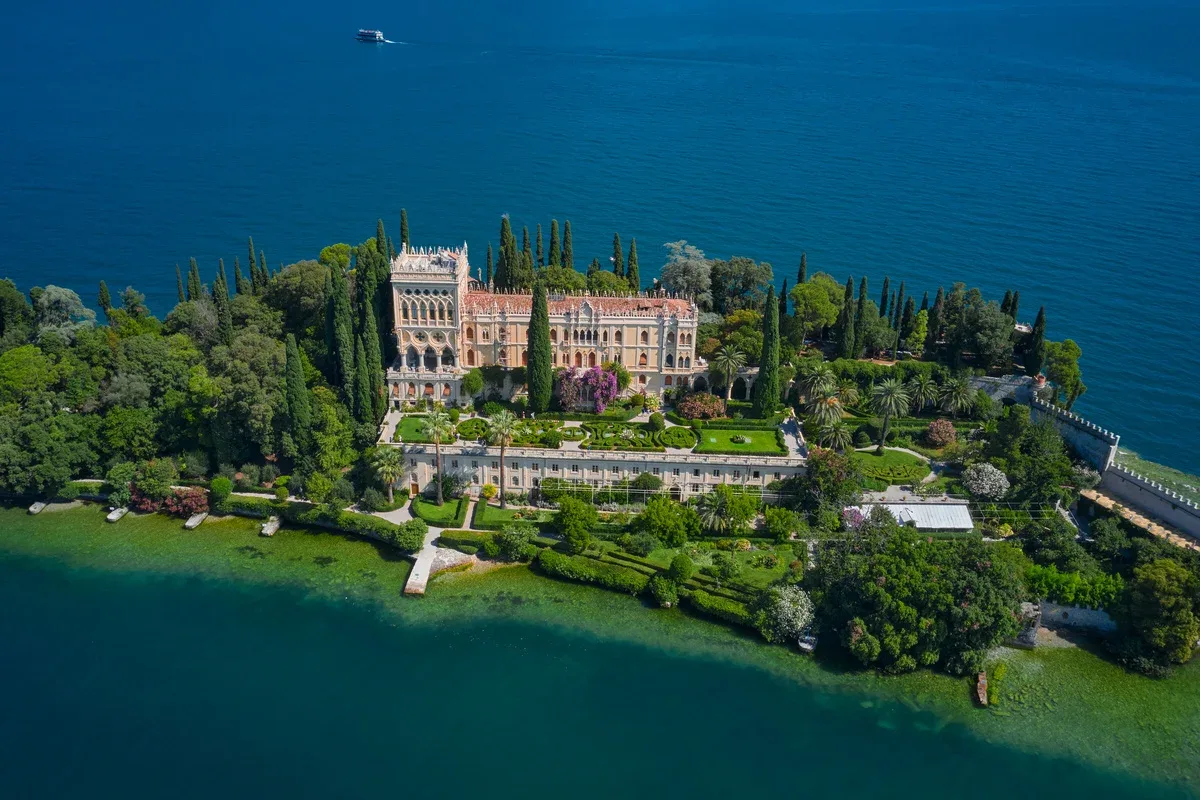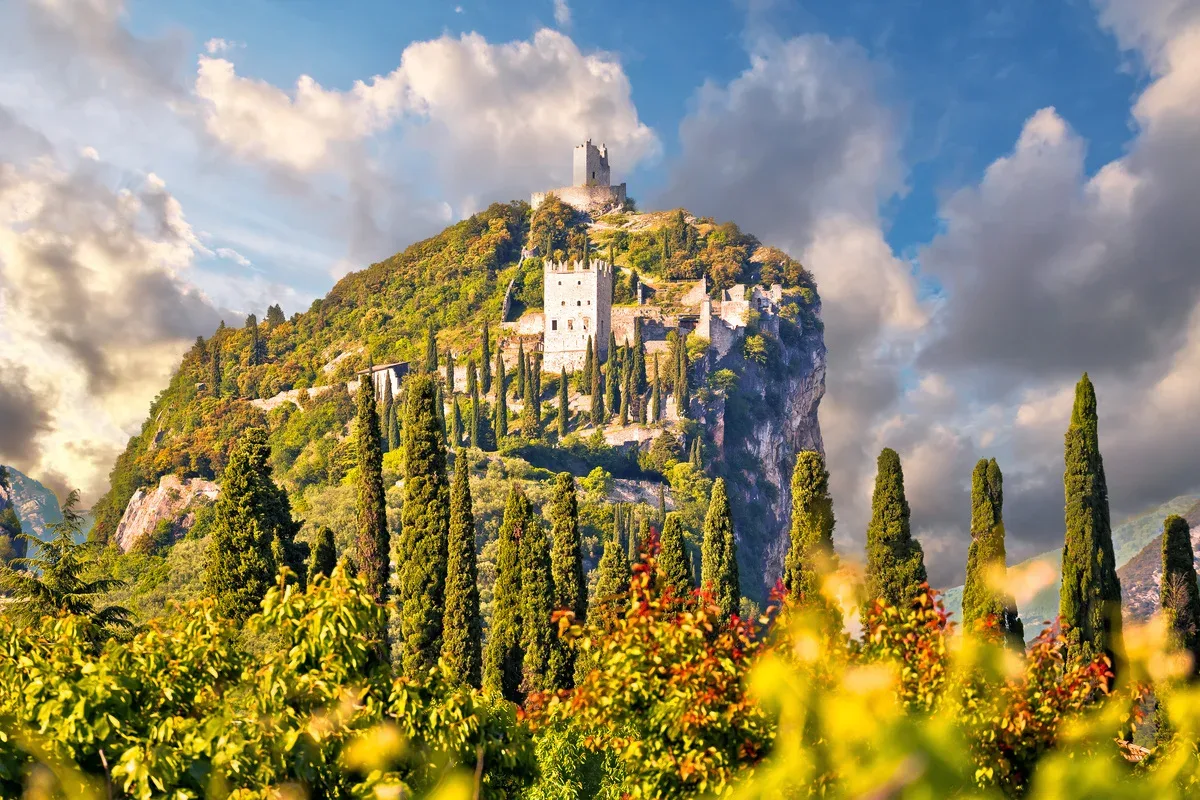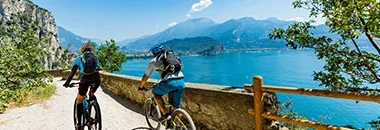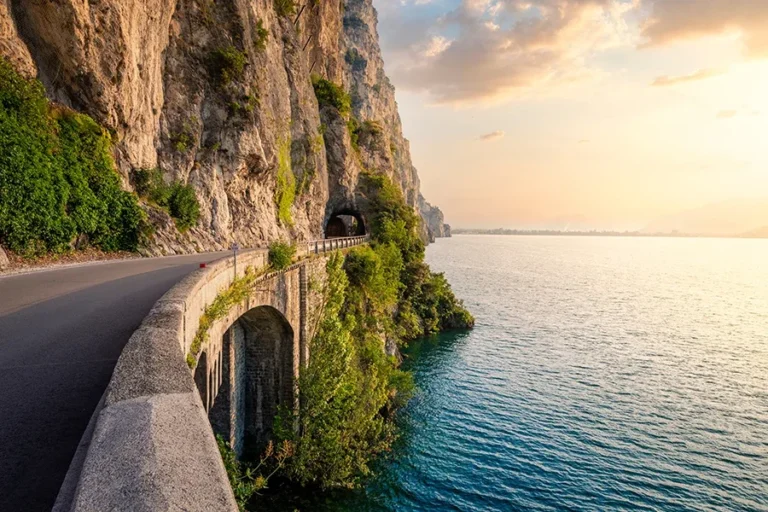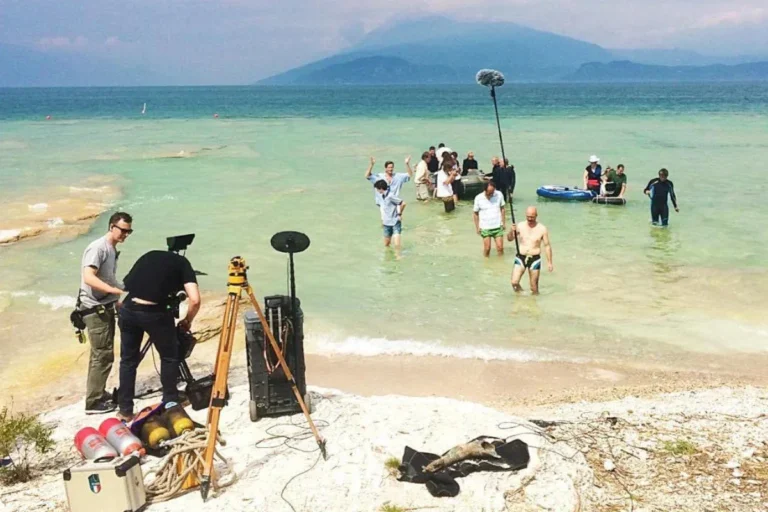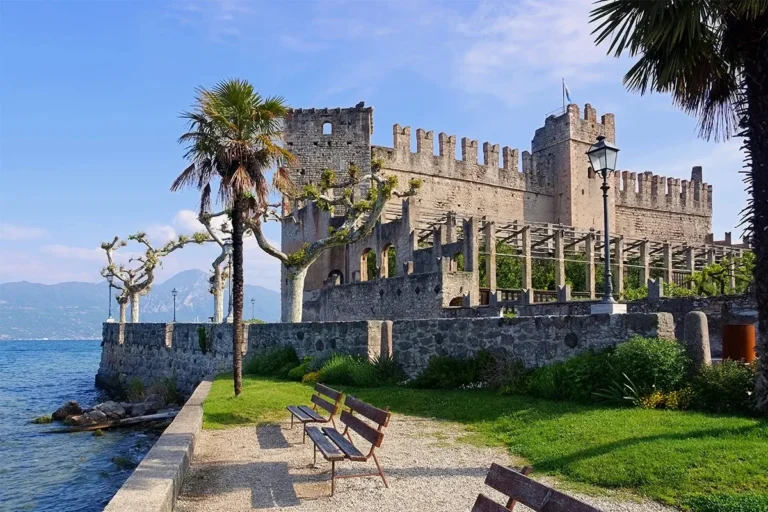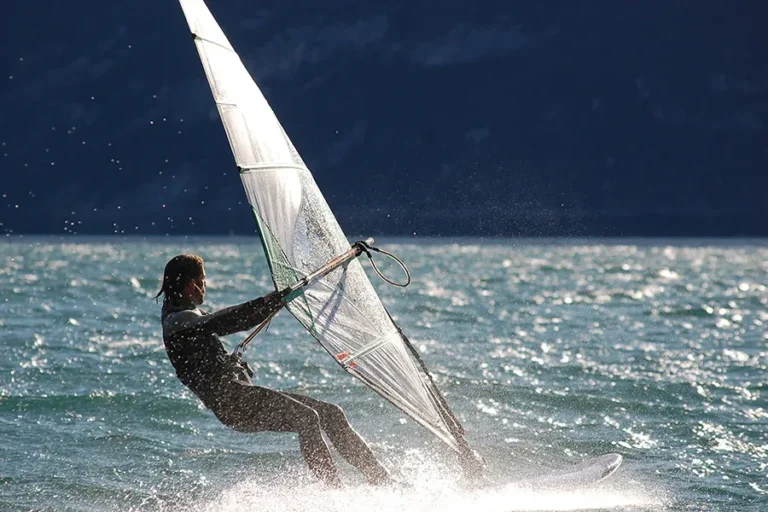If you’ve seen Luca Guadagnino’s Oscar-winning film Call Me by Your Name, you’ve likely fallen in love with its dreamy backdrop just as much as with the love story between Elio and Oliver. While much of the film is set in the sun-soaked countryside of Lombardy, a few pivotal scenes were shot in the lovely town of Sirmione, located on the stunning Lake Garda. This charming location plays a subtle yet essential role in the film, capturing the hearts of audiences worldwide with its breathtaking scenery, ancient ruins, and surprising lake views.
While the allure of Call Me by Your Name might draw you to Sirmione, the town offers so much more than just movie magic. It’s a place where ancient history and modern romance intertwine, where every corner tells a story, and where the shimmering waters of Lake Garda reflect centuries of culture, art, and emotion.
So, pack your bags, grab your camera, and prepare to step into the world of Elio and Oliver — right here on the enchanting shores of Lake Garda.
Sirmione’s Charm: A Perfect Blend of History and Romance
While Sirmione plays a relatively small role in the film, its impact is unforgettable. The town’s unique blend of history, romance, and natural beauty provides a captivating backdrop that complements the story’s emotional depth. Sirmione’s historic center, with its cobblestone streets, medieval Scaliger Castle, and vibrant local culture, makes it a perfect stop for fans of the film and those looking to explore beyond the typical tourist routes.
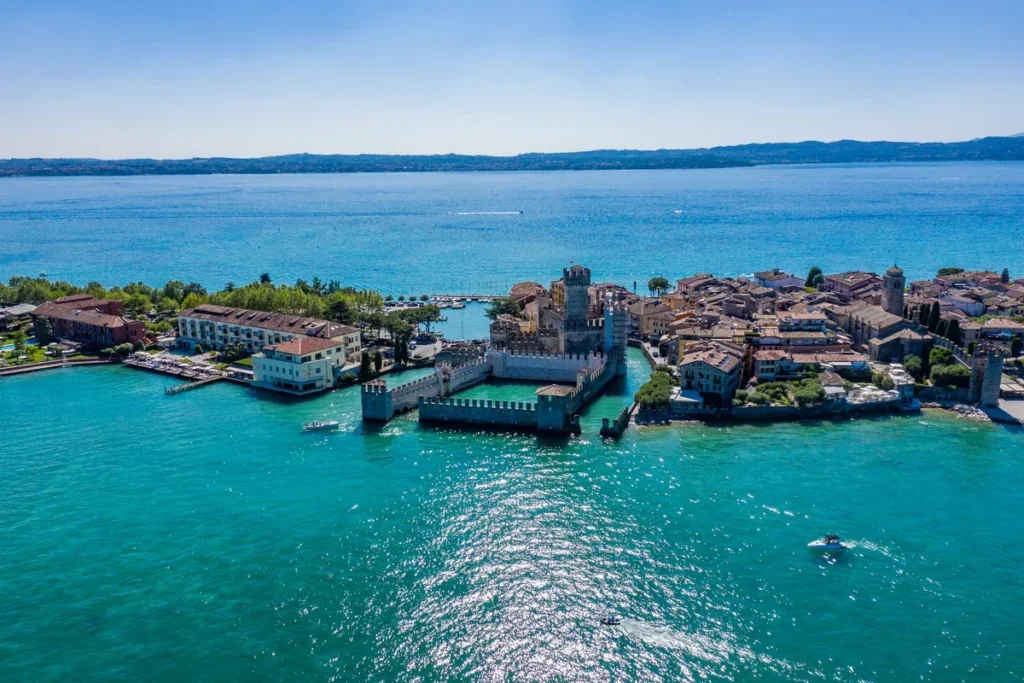
Aside from its cinematic appeal, Sirmione is known for its thermal spas, particularly the Terme di Catullo, which draw visitors seeking relaxation and wellness. The town’s cool atmosphere and healing waters make it an ideal getaway if you’re retracing the steps of Elio and Oliver or simply soaking in the beauty of Lake Garda.
A Glimpse into Grotte di Catullo
Sirmione is a jewel at the southern tip of Lake Garda, famed for its rich history, medieval castles, and healing thermal waters. In Call Me by Your Name, the town’s unique beauty is showcased during a memorable scene where Professor Perlman, Elio, and Oliver explore the ancient ruins of the Grotte di Catullo. This vast archaeological site, named after the Roman poet Catullus, was built between the 1st century BC and the 2nd century AD and stands as a testament to Sirmione’s storied past.
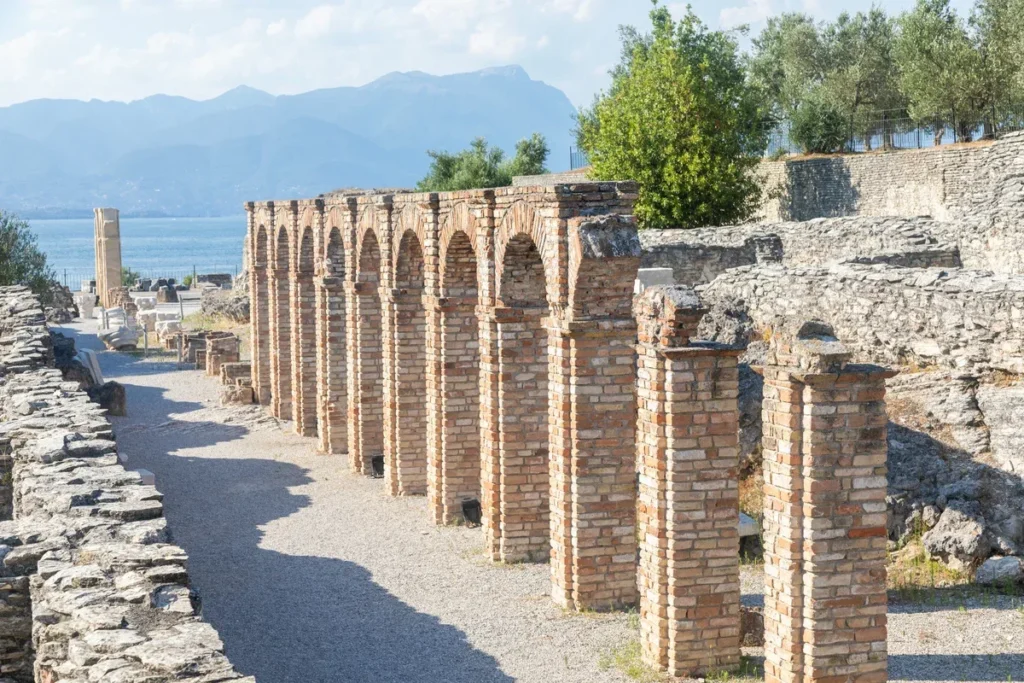
The Grotte di Catullo is an evocative setting that perfectly captures the film’s theme of discovery — both personal and historical. This impressive Roman villa complex, located at the tip of the Sirmione peninsula, offers panoramic views of the lake and is considered one of the most significant archaeological sites in northern Italy. The site’s name, “Grotte,” dates back to the Renaissance when the ruins resembled caves before excavation work began. Today, visitors can walk among the towering brick columns and stone remnants, much like Elio, Oliver, and Professor Perlman did during their on-screen visit.
In the film, the scene at Grotte di Catullo underscores the connection between the past and present, echoing the themes of longing and unspoken emotions that run throughout Elio and Oliver’s relationship. As they wander through the ancient site, the beauty of the ruins mirrors the quiet intensity of their unspoken bond.
Jamaica Beach: A Slice of Paradise
After exploring the Grotte di Catullo, the characters head to Jamaica Beach, a scenic and slightly hidden gem that sits at the base of the ruins. This beach, with its smooth limestone slabs and pristine waters, provides a stunning backdrop for the scene where Elio, Oliver, and Professor Perlman cool off in the lake after a day of exploring. The relaxed, sun-soaked atmosphere of Jamaica Beach contrasts with the tension between Elio and Oliver, making it the perfect setting for their emotional truce and deepening connection.
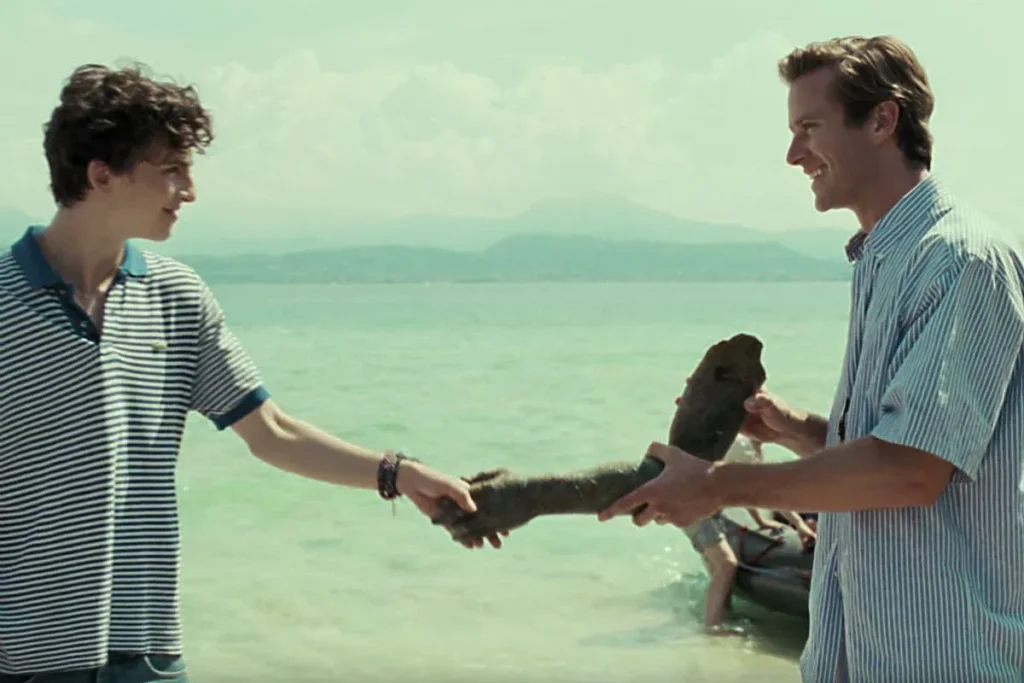
Jamaica Beach is accessible by two routes: one that follows the lake from the municipal beach and a more scenic path starting from the Grotte di Catullo entrance. The beach is often less crowded than other Lake Garda spots, giving visitors a sense of tranquility and exclusivity — much like Elio and Oliver’s private moments in the film.
The Broader Context: Lake Garda on the Silver Screen
Sirmione’s appearance in Call Me by Your Name is just one of many instances where Lake Garda has made its way onto the big screen. The region has a long history of being a sought-after filming location, lending its stunning landscapes to various films over the decades.
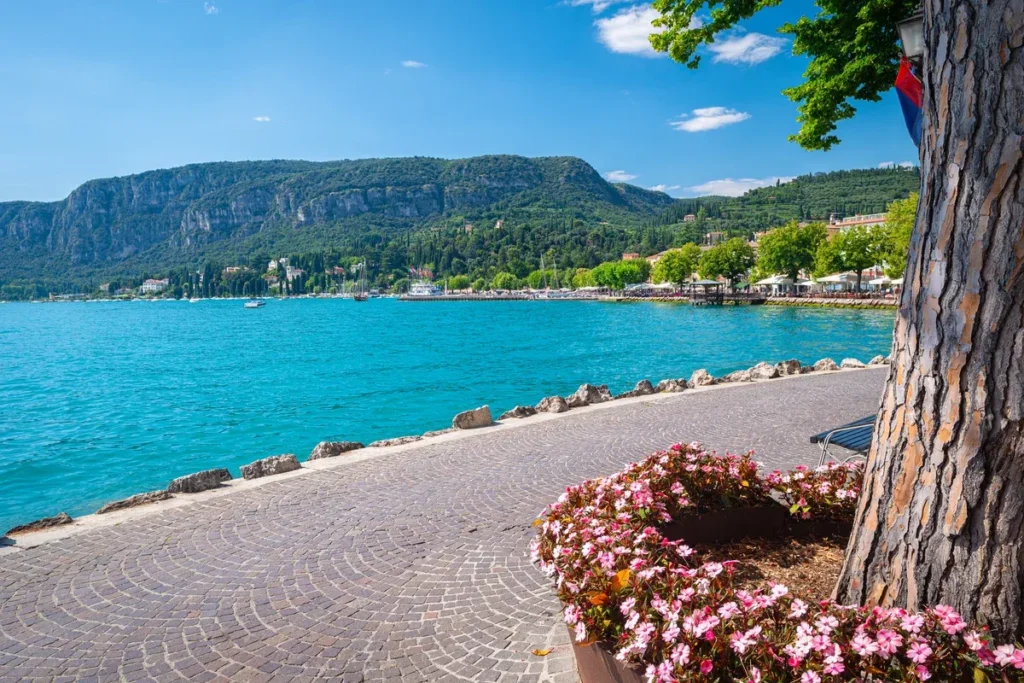
One of the most action-packed films shot around Lake Garda is the James Bond movie Quantum of Solace (2008). The thrilling opening car chase, featuring Daniel Craig as 007 behind the wheel of an Aston Martin, was filmed along the winding roads of Tremosine and Torbole. The dramatic tunnels and breathtaking views of the lake set the stage for one of the most memorable sequences in the Bond series. Although the chase appears seamless on screen, it was actually pieced together using different locations around the lake, adding an extra layer of cinematic magic.
On a more historic note, Fango e Gloria (2015), a documentary by Leonardo Tiberi, tells the story of the Italian Unknown Soldier and the battles of World War I. Several scenes were filmed at Forte Wohlgemuth in Rivoli Veronese, an impressive Austrian fortress with panoramic views of the surrounding landscape. The film took advantage of the historic site, incorporating its distinctive architecture and military history into the narrative.
For fans of romantic films, Letters to Juliet (2010) is a must-see. This heartwarming story starring Amanda Seyfried and Vanessa Redgrave was filmed in the romantic city of Verona, just a short drive from Lake Garda. The movie showcases Verona’s historic streets, Castel San Pietro, and the iconic Juliet’s House, blending the timeless allure of Shakespeare’s city with the modern charm of a contemporary love story.
In the mid-20th century, Lake Garda was also home to a incredible cinematic adventure. From 1959 to the late 1960s, Peschiera del Garda became the unexpected base for pirate movies, thanks to Walter Bertolazzi and his floating studios. Bertolazzi’s fleet of historic ships, including the famous “Circe”, was used for shooting pirate-themed films, turning Lake Garda into a stand-in for the Caribbean Sea. This fascinating chapter in the lake’s history is captured in the documentary Quando il Garda era un mare, which recounts the daring journey of transporting these ships to the lake and the larger-than-life tales of the productions that followed.
The adrenaline of a Bond chase, the echoes of wartime history, or a cinematic love letter to Italy’s romantic cities: Lake Garda has offered filmmakers a versatile and stunning stage. Next time you visit, keep an eye out — you might just find yourself standing on a movie set!












